This entry includes a walking tour! Take the tour.
Introduction
Text-to-speech Audio
Images
Dorothy Molter Museum Logo
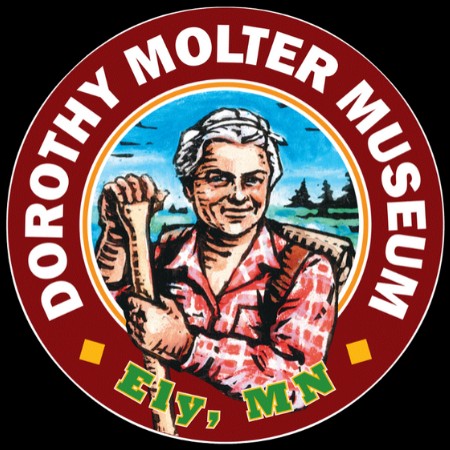
Interpretive Center & Gift Shop
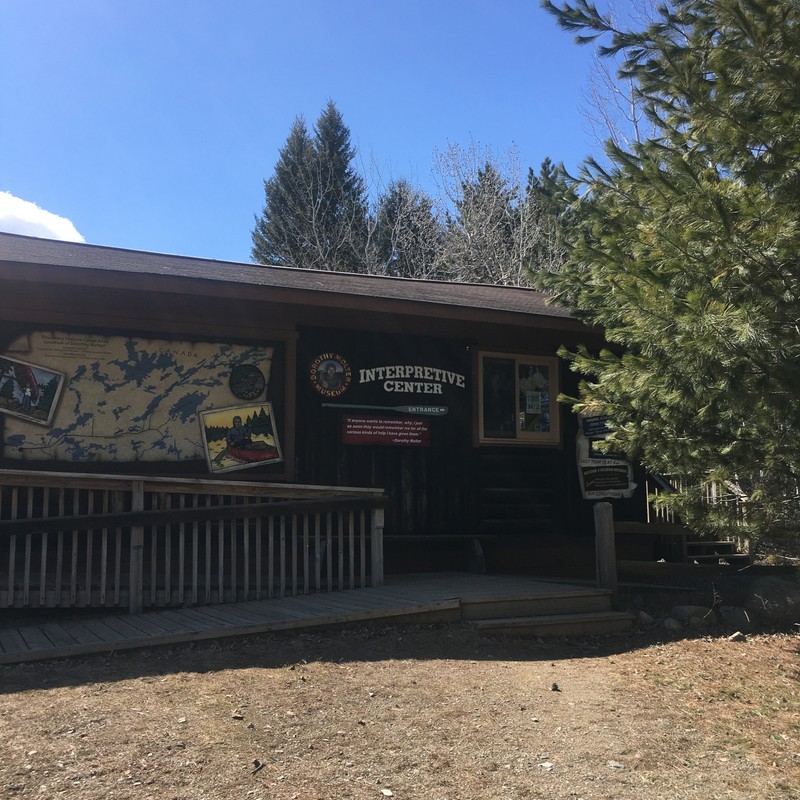
Winter Cabin
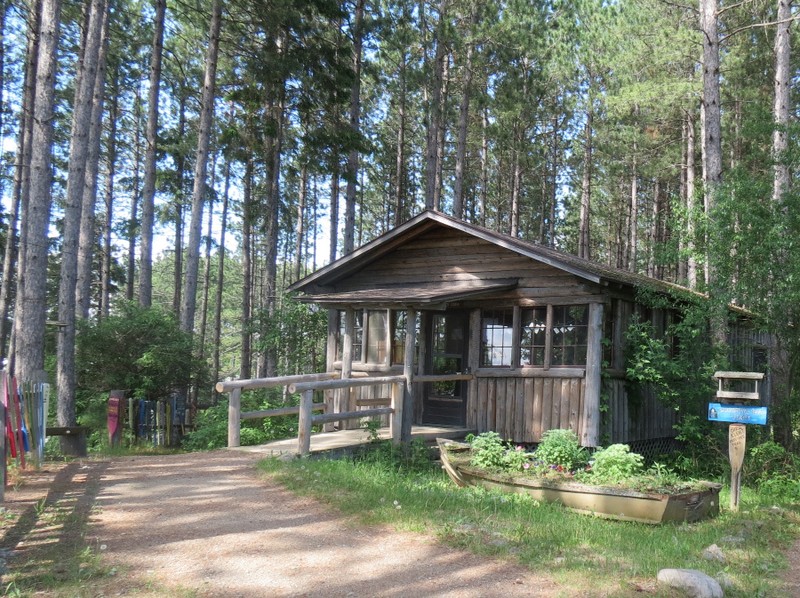
Point Cabin
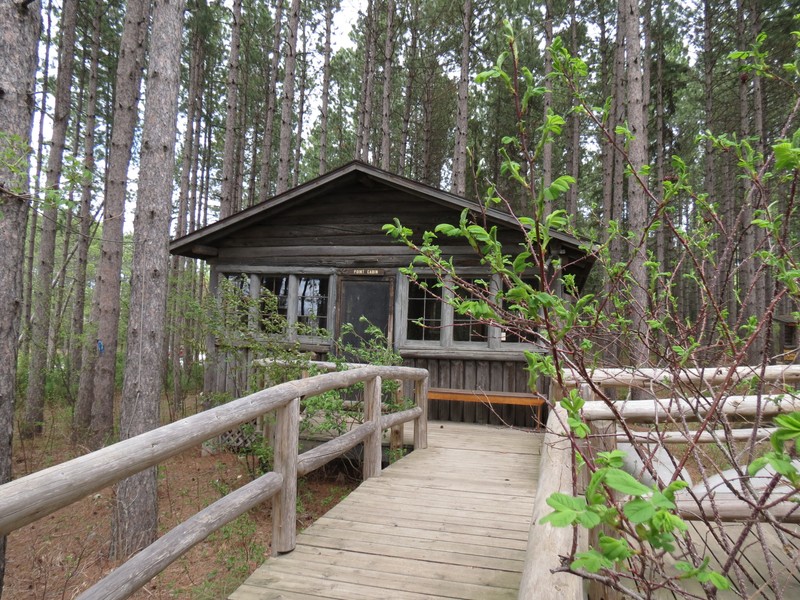
Cady Cabin
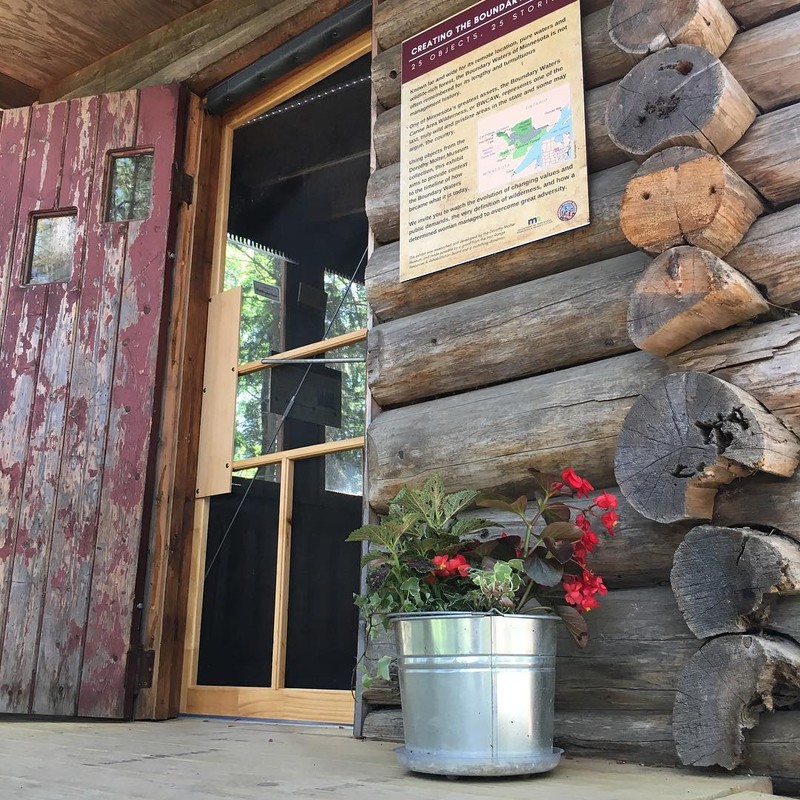
Backstory and Context
Text-to-speech Audio
Dorothy Molter was a legendary resident of Minnesota’s famed Boundary Waters Canoe Area Wilderness (BWCAW). For most of 56 years, she lived alone on the Isle of Pines on Knife Lake, 15 miles from the nearest road. When Dorothy died in 1986, she was the last remaining non-indigenous year-round inhabitant of the BWCAW and a legend of the Northwoods.
After Dorothy’s death, a group of her local friends arranged a memorial snowmobile ride to the Isle of Pines by coordinating with the U.S. Forest Service (USFS) for a one-day permit to drive snowmobiles into the BWCAW on January 10, 1987. Approximately 500 to 1,000 of Dorothy’s family, friends and supporters attended. For those who couldn’t attend, a small memorial service was held at the First Lutheran Church in Ely where a discussion over keeping Dorothy’s memory alive lead to the idea of a museum dedicated to her life.
The USFS was already moving forward with plans to eliminate the structures, non-native plants and personal items from the Isle of Pines in accordance with the residency agreement to turn the islands back to their natural state after occupancy.
Working fast, a dedicated group of people formed a volunteer task force of sorts, and were referred to as “Dorothy’s Angels.” Working with the USFS, the City of Ely and the Minnesota Historical Society, the “Angels” were granted permission to remove Dorothy’s [salvageable] cabins and personal belongings. They had until March 14 to go in and out of Knife Lake either by non-motorized means or approved flights.
Partnering with the Ely-based Voyageur Outward Bound School and Northern Tier Boy Scout Base on Moose Lake, the “Angels” coordinated dogsled teams (including custom freight sleds) to systematically dismantle, mark and stack the cabins, and haul the buildings and personal belongings.
However, in early March, Minnesota experienced a late-winter thaw with temperatures over 60 degrees Fahrenheit and the sustained warm temps made portages muddy and lakes slushy, preventing the dogsled teams from traveling to and from Knife Lake.
Once again, the Ely Community took action and letters to the USFS were sent by the mayors of Ely and Winton, the Ely Chamber of Commerce and the Ely Igloo Snowmobile Club to request permission to use snowmobiles and all-terrain vehicles (just out on the market) to finish the job.
An interagency letter received on March 20 granted a three-day window to access Isle of Pines by motorized means and remove the remaining cabin logs. An army of about 70 snowmobiles and three-wheelers with any type of trailer hurried to Knife Lake in order to beat the weather and meet time constraints.
Dorothy’s cabins and personal belongings were stored in Ely as the Angels developed a plan for the museum and where to rebuild the cabins. In 1991, it was decided that the John Rozman Memorial Forest of primarily mature red pines on the east edge of Ely would be a fitting location and Dorothy’s Angels once again pulled together to reassemble the cabins and prepare them for the public. On May 6, 1993, what would have been Dorothy’s eighty-sixth birthday, the Dorothy Molter Museum opened its doors.
The Dorothy Molter Museum was established in her honor to preserve her legacy: it features Dorothy’s root beer-making equipment, an extensive collection of personal objects, photographs, documents and memorabilia inside her three cabins: Winter, Point and Cady (or Honeymoon).
Through exhibits, tours and related educational programming, the Dorothy Molter Museum is uniquely positioned to help visitors gain an understanding of how the establishment of the Boundary Waters as a designated federal wilderness is an important part of the area’s past, present, and future.
The museum property is currently comprised of an Interpretive Center/Museum Store, the three original log cabins, Dorothy’s Discovery Trail, a ¼-mile nature trail, and Birds’ Landing at Dorothy’s, a public birding area. As time goes on, those who knew Dorothy are becoming rarer therefore, the museum continues to evolve its interpretive offerings and exhibits so that it can continue to provide new and relevant ways to share Dorothy’s story to the next generation of Northwoods stewards.
Sources
Dorothy Molter Museum Collection Archives
Edberg, Jess. History, www.rootbeerlady.com. February 18th 2015. Accessed April 15th 2020. https://www.rootbeerlady.com/museum/history/.
Guy-Levar, Sarah. Schocke, Terri. Dorothy Molter: The Root Beer Lady. Cambridge, MN. Adventure Publications, 2011.
Cary, Bob. The Root Beer Lady, The Story of Dorothy Molter. Edition 1. Minneapolis, MN. Univ Of Minnesota Press, 2002.
Dorothy Molter: Living in the Boundary Waters. Black, Wade & Hadel, Judith. Documentary on/with Dorothy Molter. United States. 1987.
Dorothy Molter Museum
Dorothy Molter Museum
Dorothy Molter Museum
Dorothy Molter Museum
Dorothy Molter Museum
